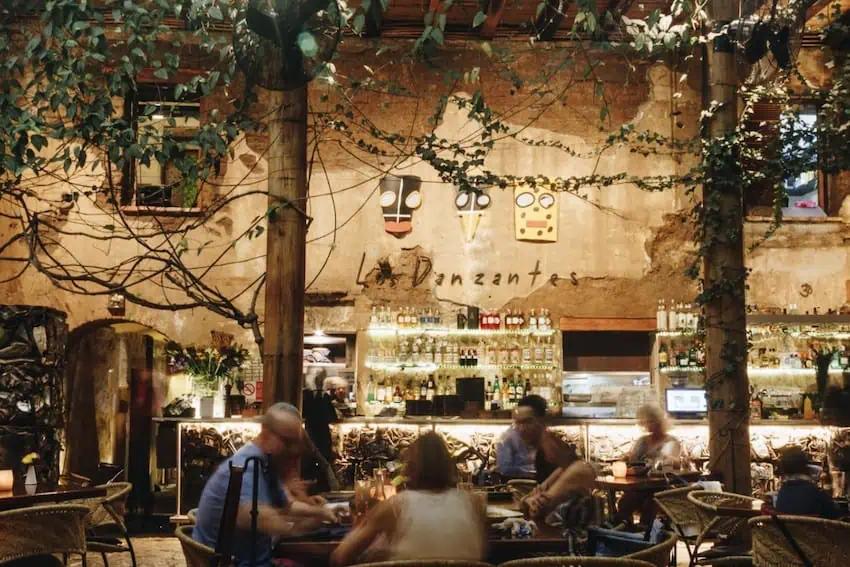How are Michelin star restaurants in Mexico doing?

If there’s one thing Michelin Guide stars promise, it’s prestige. Even for eateries already respected in their given communities, this coveted endorsement guarantees something more — namely, that in the public perception, they will now be recognized as being among the best restaurants in the world.
This enhanced standing is well-established and has been a fact of life for restaurants since the eponymous French tire company first started including them in its travel guides in 1920. The star system to denote high quality began in 1926, with a second and third star added to recognize the best of the best by 1931. Additional awards have followed, including the Bib Gourmand, to denote quality and value, and the Green Star, to reward high-quality restaurants with sustainable practices, as the Michelin Guide has evolved beyond France through the years to rate restaurants in more than three dozen countries around the globe.

Since May, that number has included Mexico. A few months ago, the Michelin Guide announced that 157 restaurants had been recognized for quality from several Mexican states, with 16 receiving the coveted one-star ranking and two more earning an elite two-star classification. Given Mexico’s internationally recognized cuisine, more should probably have been honored.
“Without a doubt,” said Enrique Olvera, chef at Mexico City’s Pujol, which received two stars. “I hope that subsequent editions will include more states: the diversity of cuisines and ingredients in Mexico is something that fortunately happens throughout the country. There isn’t a single state that doesn’t have extraordinary cuisines.”
However, Mexico’s Michelin Guide recognized chefs and restaurateurs are certainly benefiting from the honor, including in ways they may not have envisioned when the stars were first announced.
The unexpected benefits of a Michelin star
One benefit for those who work at Michelin Guide-recognized restaurants is an enormous sense of pride and accomplishment. “We received the recognition with great pride and joy,” affirmed Elena Reygadas, chef-owner at the one-star Rosetta in Mexico City. “It was a tangible appreciation of the hard work and dedication of the people who put many hours and effort into this project. After more than a decade of commitment, it is a good encouragement for the team to continue moving forward.”


The chef at another one-star restaurant, KOLI Cocina de Origen in Monterrey, likened the award to a dream and the culmination of a long journey. “We are a tasting menu project focused on the traditions and stories of our state,” explained Rodrigo Rivera-Rio. “Like any restaurant we’ve had our ups and downs. But we’ve always stayed motivated and been true to our traditions… [the Michelin Guide star] was always what we all dreamed of. Many collaborators have been working at KOLI for years and some of us have been since the opening. But we kept giving it our all, when we found out they were coming we got super excited. In the end, everything was a dream. The day they gave us the star was an explosion of emotions… just total excitement.”
Michelin stars boost reservations and sales
The pride and well-earned sense of achievement felt by those who work at Michelin Guide-starred restaurants are real. But it bears noting that there are also even more tangible benefits. The prestige that comes with the awards invariably leads to increased interest, more reservations and more revenue. Often, this means more money for the staff, too.
The monetary value of a Michelin star has long been recognized. As the late, great Joël Robuchon — the most decorated chef in Michelin Guide history, whose restaurants earned 31 stars — once told Food & Wine: “With one Michelin star, you get about 20 percent more business. Two stars, you do about 40 percent more business and with three stars, you’ll do about 100 percent more business. So from a business point… you can see the influence of the Michelin Guide.”
Of course, those numbers aren’t exact and can vary from country to country and from region to region. Rivera-Rio, for example, estimated that sales are up about 40 percent for KOLI since the Michelin Guide announcement in May, allowing the restaurant to give better pay to its staff and hire more workers. Victor Ramírez, Communication and Marketing head at Los Danzantes Oaxaca, which was awarded a Michelin star and a Green Star for sustainability, did not quote an exact figure, but said that “reservations at our restaurant increased significantly, and people visited us with even greater expectations.”
A reminder to residents that lets restaurants get more creative


For Edgar Núñez, chef of the acclaimed Sud 777 in Mexico City, the biggest benefit of receiving a Michelin Guide star hasn’t been a boost to his reputation or his restaurant’s sales, but rather that it has helped to remind the city’s residents of the culinary pleasures available to them. “I think the star has returned Mexican diners to us… and that is very good, because I am interested in local people.”
Chefs also mentioned the quality of their restaurant’s food, and how the Michelin Guide stars had helped them to raise it to a new level. For Reygadas, this was reflected by enhanced creativity, as she feels she now has a “wonderful opportunity to show a broader range of approaches within the Rosetta kitchen.” Meanwhile, for Rodrigo Rivera-Rio and KOLI Cocina de Origen, the star has meant the opportunity to buy better ingredients. And because sales are better, he worries less about whether they’ll use them all.
Victor Ramírez also brought up suppliers, and how Los Danzantes Oaxaca has been able to spotlight those who contribute to its quality and sustainable ethos. “They are the main ambassadors of Los Danzantes, Oaxaca and Mexico,” he noted, mentioning those who tend the restaurant’s garden and the many small producers from whom the restaurant sources ingredients.
Michelin Guide stars bring more attention
More than the enhanced prestige, the increased sales or the opportunity to make better food, what the Michelin Guide awards have done is bring more attention to Mexico’s best restaurants. For that, the chefs are appreciative.
“We are very grateful and feel honored,” said Enrique Olvera. “It is a recognition of the daily work and effort of the entire Pujol team over 24 years, including everyone who works and has worked with us.”
“The truth is,” Rivera-Rio noted, the Michelin Guide star “has been something wonderful, almost miraculous. We know this is a blessing and don’t want to go backward. So we’re working very hard to maintain this star. We are all happy and very motivated with an eye to the future and to continue doing what we like the most.”
Chris Sands is the Cabo San Lucas local expert for the USA Today travel website 10 Best, writer of Fodor’s Los Cabos travel guidebook, and a contributor to numerous websites and publications, including Tasting Table, Marriott Bonvoy Traveler, Forbes Travel Guide, Porthole Cruise, Cabo Living and Mexico News Daily. His specialty is travel-related content and lifestyle features focused on food, wine and golf.
Source: Mexico News Daily

